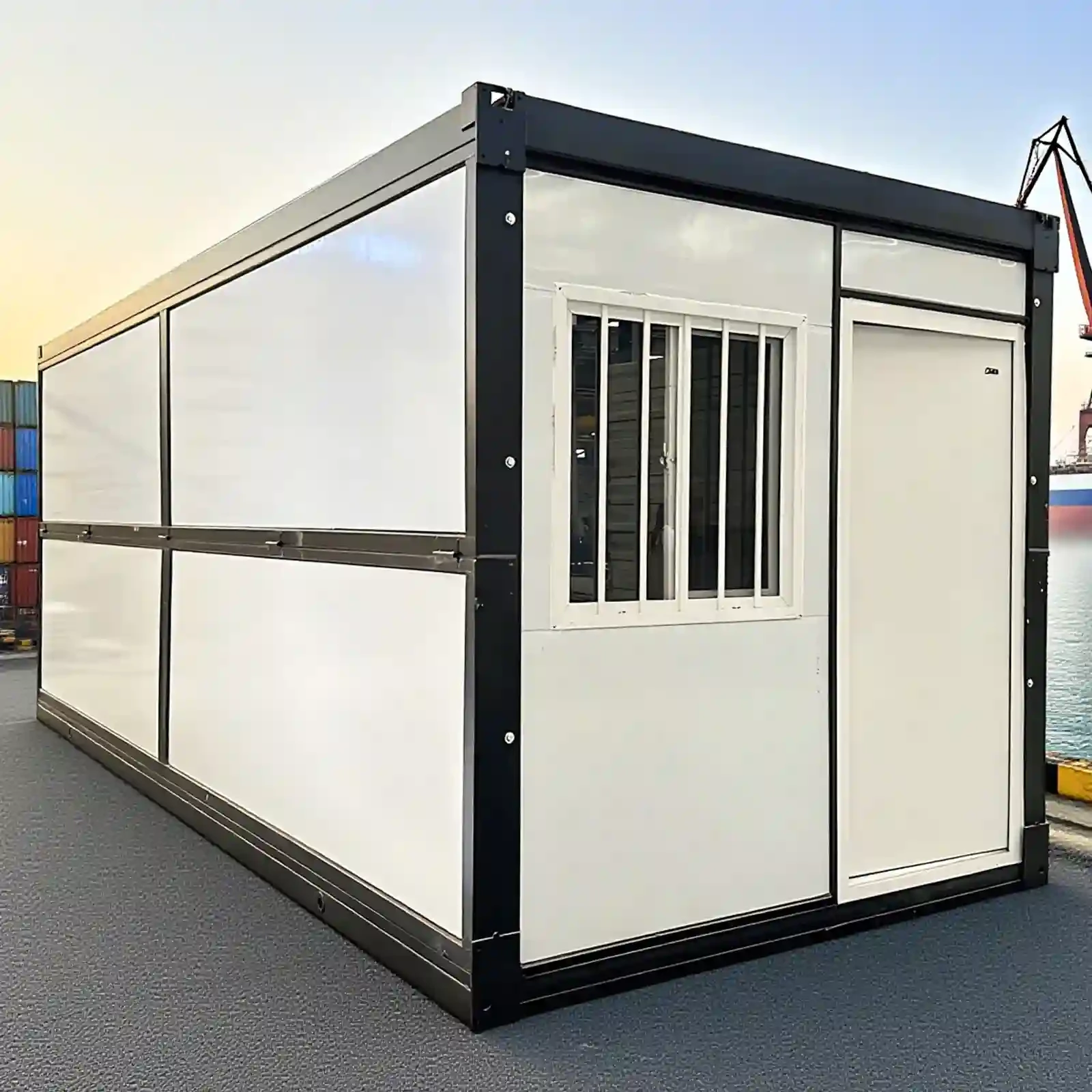In today's pursuit of a high-quality living experience, sound insulation has become a crucial indicator of residential comfort. The unique design and compact space of capsule homes have drawn considerable attention for their soundproofing. The sound insulation performance of capsule homes is influenced by a variety of factors, including the choice of building materials, structural design, construction techniques, and the operating environment. Below, we will delve deeper into the sound insulation performance of capsule homes.
1. The influence of building materials on sound insulation effect
(1) Wall materials
The wall is the key part of the sound insulation of the capsule house. In order to achieve good sound insulation, many capsule houses adopt a composite wall structure. The outer layer usually uses high-strength metal plates or fiber cement boards. These materials are strong and durable and can withstand external physical impacts; the middle is filled with high-efficiency sound insulation materials such as rock wool, glass wool, polyurethane foam, etc. Rock wool has good sound absorption properties, and its porous structure can effectively absorb sound waves and reduce the propagation of sound; the sound insulation effect of glass wool is also very significant. It can convert the energy of sound into heat energy, thereby reducing the transmission of sound. Polyurethane foam not only has excellent thermal insulation properties, but also performs well in sound insulation. Its closed-cell structure can effectively prevent sound penetration. Through this composite wall design, the capsule house can significantly reduce the transmission of external noise.
(2) Door and window materials
Doors and windows, as the gateway between a house and the outside world, are a weak link in soundproofing. High-quality space capsule homes prioritize soundproofing in their design. Windows often feature double or triple-layered insulating glass, with an inert gas (such as argon) filled between the panes. This design effectively reduces sound transmission. The air or inert gas layer within the insulating glass acts as a barrier, blocking the sound transmission path and improving sound insulation by 20-30 decibels compared to single-layer glass. Window frames are also constructed of thermally insulated aluminum or plastic-steel, materials with inherent sound insulation properties that bond tightly to the glass, minimizing gaps and further enhancing soundproofing. Solid, soundproof doors are often used, with panels filled with soundproofing material and frames equipped with sealing strips to ensure a well-sealed space when the door is closed, blocking out any outside noise.
2. Optimization of sound insulation effect by structural design
(1) Sealing of the overall structure
The overall structural design of the capsule housing significantly impacts sound insulation. Good sealing is fundamental to ensuring sound insulation performance. During assembly, the various components are precisely connected and sealed with materials such as sealing strips and sealants. For example, the joints between modules and where pipes pass through walls are rigorously sealed to prevent sound transmission through gaps. Furthermore, the roof and floor of the housing have been specially treated to provide additional sound insulation and reduce noise interference between upper and lower floors. These measures ensure that the capsule housing creates a relatively enclosed space, effectively blocking the ingress of external noise.
(2) Shock absorption design
In addition to direct sound transmission, vibration is also a significant factor in noise generation. Capsule homes typically incorporate shock absorption measures in their structural design to reduce noise generated by external vibrations or equipment operation. For example, shock absorbers or cushions are installed at the base of the home. These absorb and buffer vibration energy, reducing its impact on the home structure and thus reducing the noise generated by vibration. Equipment installed within the home, such as air conditioner outdoor units and water pumps, is also equipped with shock-absorbing brackets to prevent vibrations from operating the equipment from being transmitted to the home structure, further enhancing sound insulation.
3. The influence of construction technology on sound insulation effect
The quality of construction workmanship is directly related to the sound insulation performance of a capsule home. Every detail must be considered during the construction process. For example, when installing sound insulation materials, ensure they fit snugly, leaving no gaps, otherwise the sound insulation will be compromised. During the installation of walls, doors, and windows, precise installation is crucial to avoid gaps. Even high-quality soundproofing materials won't achieve the desired sound insulation if doors and windows aren't tightly installed. Furthermore, areas where pipes, wires, and other components penetrate the walls must be rigorously sealed and soundproofed to prevent sound transmission. Only by strictly adhering to construction specifications and paying attention to every detail can the desired sound insulation performance of a capsule home be achieved.
4. The impact of actual use environment on sound insulation effect
(1) External environmental noise
The operating environment of a capsule home significantly impacts its soundproofing effectiveness. If a home is located in a noisy area, such as a busy street, near an airport, or around a factory, even if the home itself has good soundproofing, it may still experience some noise interference. In this case, the home's soundproofing effectiveness will be affected by the intensity and frequency of the external noise. For high-frequency noise, such as the roar of airplanes and car horns, the intensity of its transmission into the room can be effectively reduced through the appropriate selection of soundproofing materials and optimized structural design. However, for low-frequency noise, such as the vibrations generated by moving vehicles and the roar of industrial equipment, due to their longer wavelengths and longer propagation distances, they are more difficult to block. Special soundproofing measures, such as adding shock absorbers and using low-frequency soundproofing materials, are required to achieve effective soundproofing.
(2) Internal use
The use of the interior of the home can also affect the effectiveness of sound insulation. Activities such as making loud noises, playing music, or using noisy devices inside the space capsule will generate internal noise, affecting occupants' comfort. Furthermore, internal noise can be transmitted through the structure to adjacent rooms or the external environment. Therefore, proper control of internal noise during use is also crucial for improving living comfort. For example, when renovating, choose decorative materials with good sound-absorbing properties, such as sound-absorbing wallpaper and curtains, to reduce the reflection and transmission of internal sound. When using electrical appliances, choose products with low noise levels and arrange their use time and location appropriately to avoid disturbing others.
The sound insulation performance of capsule homes depends largely on factors such as the choice of building materials, structural design, construction techniques, and the operating environment. By utilizing high-quality soundproofing materials, rational structural design, and meticulous construction techniques, capsule homes can achieve excellent sound insulation, creating a quiet and comfortable living environment for residents. However, in actual use, it is necessary to consider the impact of the external environment and internal usage on sound insulation, and take appropriate measures to optimize and improve the performance. With the continuous advancement of technology and the increasing demand for living environments, the sound insulation performance of capsule homes is expected to be further improved, providing people with a more tranquil living experience.

 USD
USD
 GBP
GBP
 EUR
EUR






